How to Grow Brussels Sprouts for a Top-Tier & Tasty Harvest
Author: Jen Worst | Editor: Omar Alonso
Review & Research: Jen Worst & Chris Miller
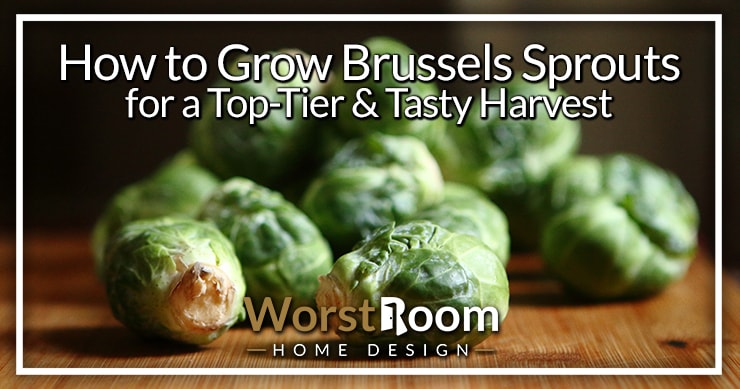
Knowing how to grow brussels sprouts is a piece of cake. We'll walk you through every step and once it's in your head, you'll never need to refer to any resource except your own memory ever again.
Brussels sprouts belong to the mustard family, and they're in the same category as broccoli, kale, cabbage, types of cauliflower, etc. They're packed with nutritional benefits as they are an excellent source of many nutrients like proteins, fibers, minerals, and vitamins.
These sprouts are a leafy green and crunchy vegetable that can be used in making various delicacies. These taste fantastic, no matter how they are cooked, as long as you're not a little kid that thinks everything is gross.
They're a cold-loving vegetable and some of the few that you can harvest from September to February. The growing period is generally long, almost 26 to 31 weeks, and the climate also affects the growing period.
It is also said that the taste enhances after a frost or two. In our guide, you will learn everything about how to grow brussels sprouts.
When to Plant Brussels Sprouts
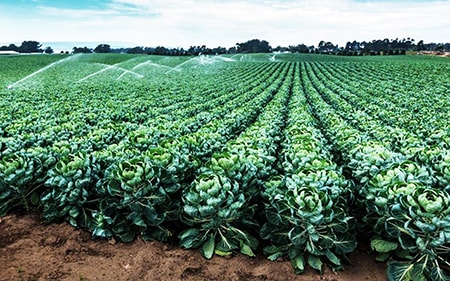
Brussels sprouts were first cultivated (as far as we know) in ancient Rome, though the kind we enjoy today came about in 13th century Flanders (Belgium). They originate in the Mediterranean along with other cabbage-related species.
Brussels sprouts are harvested in winter, so to get the ideal harvest, you will have to sow it four months before the first frost.
For colder winter regions – you should sow the seed indoors first, approx., 2 to 3 weeks. Since the weather gets below freezing in late winters, you would want an early fall harvest, so sow the seeds indoors before last spring frost.
For milder winter regions – you should sow the seeds in early or midsummer. This would get you an early winter or mid-fall harvest. The weather in these regions may or may not get below zero, so this is the best timing.
For warmer winter regions – you should sow the seeds during midsummers, directly outdoors. This would get you a late to midwinter harvest. It's perfect for places where the temperature hardly ever goes below freezing.
Planting Brussels Sprouts
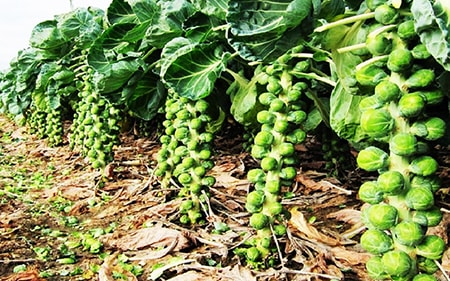
While planting Brussels sprouts in your garden or greenhouse make sure that they get direct sunlight exposure for at least 6 to 8 hours a day. They are cold-loving plants, so Northern US is the best place for them; however, some varieties grow in hot regions as well.
Brussels sprouts should not be planted straight into the ground in the open fields. First, plant them in greenhouses or indoors in a container.
Place the seeds in a shallow tray of soil just under an inch deep. Water them properly and maintain consistent moisture, but do allow for drainage.
Never let them dry out, make sure they are moist enough during the early establishment phase. But don't overwater as this may result in stunted growth and may rot the root.
The seeds germinate within 7-12 days. When they grow up to 4 inches tall and have around seven leaves on them, they're ready to be moved from the safety of the greenhouse to the garden or fields.
This process of moving them is known as transplanting. This must be done carefully since the sprouts have yet to develop robust roots.
The soil around them should be firm, but not too compact. Just pat it down lightly. When shifted to the field, about 25-30 inches of spacing should be maintained between the plants.
Brussels sprouts need fertile and moist soil with plenty of organic matter. Also, the soil must be tested to check its nitrogen level, as these plants need a lot of nitrogen to grow well. You can balance it by using the right fertilizer numbers.
Members of the brassica family should not be planted in the same spot every single year. A three-year gap should be ensured to maintain the nitrogen level of the soil.
The pH level of the soil should be at least 6.5, but preferably higher. Brussels sprouts must be fertilized twice a season, once when they are twelve inches tall and then again four weeks later.
Just as you plant them indoor initially, they need time to adjust to outdoor conditions. If possible, place a tent over them to keep them protected initially. Later the tent can be removed.
How to Plant Brussels Sprouts
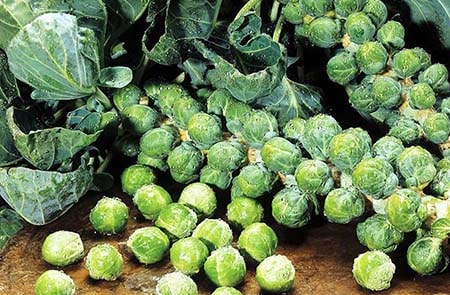
Before sowing the seeds in the soil, make sure to dig and add some aged manure or compost. Do this a few days before you start sowing the seeds in the soil.
Brussels sprouts, as we know, are a cold-weather harvest. For such varieties, it is suggested to plant them in raised beds. It helps with inconsistent weather and temperatures.
These sprouts require nutritious soil and a firm area. In autumn time, you must give them support with a stake. They may get blown away otherwise. They usually do well in any field or site if you follow these general recommendations.
If you are directly planting them directly into the soil, it would be best to plant them half an inch deep and almost 2 to 3 inches far from one another. In the case of transplanting, it is best to plant them at least 12 to 24 inches away from each other.
Don't forget to give them plenty of water while planting or transplanting. After that, they need 1 or 1.5 inches of water every week. This is key in the process of understanding how to grow brussels sprouts.
Taking Care When Growing Brussels Sprouts
It's not hard to take care of Brussel sprouts. Here are some points that you should consider while looking after your plant.
One of the most important things is to keep them hydrated, especially if they're growing in a warmer region. It's essential to mulch because this cools down the soil by retaining the moisture in it.
When they reach a height of 6 inches, thin out the plants to a spacing of 12 to 24 inches away from each other. After thinning them out, make sure you water them well. And also use a nitrogen-rich product to fertilize every 2 or 3 weeks.
The roots of the sprouts don't grow very deep, which means they can easily get damaged, so stay away from disturbing the soil surrounding the plant.
To ensure that all the energy is invested in the plant's growth, it would be best to eliminate any yellow leaves from the plants. For a speedy upward growth, you can remove the leaves on top before harvest (at 3 to 4 weeks).
However, if you're going to harvest in the winter, it is best not to remove the top leaves. This is because the plants remain protected from the frost. Also, cover the plant with mulch (10 to 12 inches).
How to Harvest Brussels Sprouts
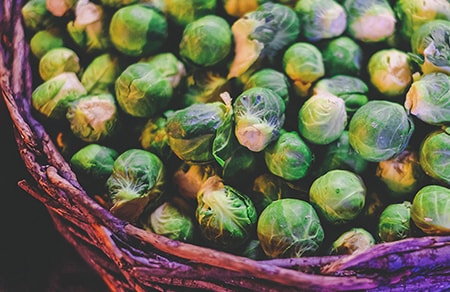
Brussels sprouts are harvested from the bottom as they begin to ripen from the bottom upward. The perfect time for harvesting is when they reach 1 inch.
You can also harvest the sprouts in stages. This is beneficial because they mature from the base so that you can work your way up in stages.
After removing the leaves, the whole stalk is taken out with roots. It is best to hang the stalks in a dry and cold basement or barn in an upside down position. Store the stalks without the roots for a month in the basement.
To prevent any form of diseases from taking hold, before harvesting, make sure to clear up all the foliage.
How to Store Brussels Sprouts
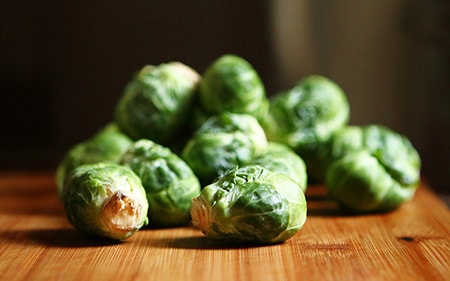
Once you know how to grow brussels sprouts and harvest them, the next step is in storing them ongoing consumption. They are not washed before storing. They're only washed just before the use. To store them in the refrigerator for up to 5 days, you can keep them in a zip-lock bag.
When storing them for a more extended period, it's recommended to blanch them and then freeze them. They'll be usable for almost six months.
Diseases & Pests in Brussels Sprouts
Brussels sprouts are generally capable of surviving in harsh conditions. However, diseases and pests may infect them just like they infect any other harvest. Listed below are some of the commonly found diseases and pests in our new favorite plant.
Cabbage Caterpillars – the enemy in this situation is a butterfly who may lay many eggs just below the leaves. After hatching, the caterpillars tend to suck out all the juice from the leaves.
Club-Root Disease – this disease is caused by a pathogen that's able to live in the soil during harsh winter weather. It affects the root systems of the plant and cause them to grow thick. This condition ends up killing the entire plant.
Cabbage Root Fly – this is a disease caused by bugs, and it usually affects newly transplanted plants. With this disease, the plant experiences wilting of the foliage. Upon digging out, you can see white maggots all over the roots.
Cutworms – this disease is a common occurrence as it is caused by bugs that live in the soil. They harm the plant by eating the leaves at night time. They're typical pests!
To control or prevent the issues mentioned above, you can use pesticides. If you are not a big fan of using pesticides on your harvest, there are organic pesticides, such as neem oil.
All you have to do is spray the oil on the plants. To not let it interrupt with the taste or anything, it's best to stop spraying the neem oil a few weeks before the harvest.
What Do Brussels Sprouts Look Like?
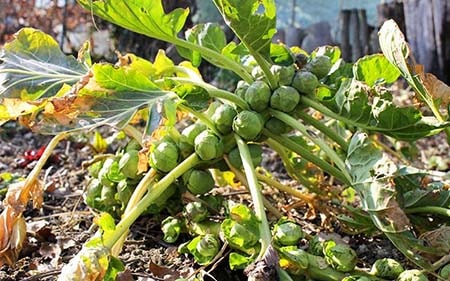
Brussels sprouts look like small cabbages, with their outer portions formed by green leaves wrapping around the center. The plants grow vertically with large leaves growing from the top. The mature stem is covered in sprouts from just above the ground to just below the leaves at the top.
Different Brussels Sprout Varieties
There are a wide variety of Brussels sprouts. Some of them include:
- Redarling - These are red-purple in color and mild in taste
- Capitola - These are medium-sized bright green sprouts with flat wing leaves
- Confidant - These are dark green and are a mid-season variety
- Cryptus - These are easy growing and sturdy plants
- Gigantus - These are a high-yielding, vigorous variety that have medium green sprouts with a round-elliptic shape
Honestly, in my opinion, beyond their appearance there's not much a difference in these when it comes to enjoying them as a food.
Knowing How to Grow Brussels Sprouts is Easy!
Growing brussels sprouts is assumed to be tricky, but it's not. Once you start getting into the planting scene, you will see that it is not that as difficult as you may imagine. Just takes a little patience.
These crunchy green vegetables go well no matter how they are cooked. They taste excellent when roasted. They're a real treat in salads. For the children, you can sneak them into their burgers.
In this guide, we tried to go into every little detail of sowing, growing, and harvesting this plant. We also mention the possible diseases and pests that can come around, so that you can safeguard your harvest from them.
After eating your home grown, organic veggies, you'll never buy from the store again. And that's how to grow brussels sprouts!



